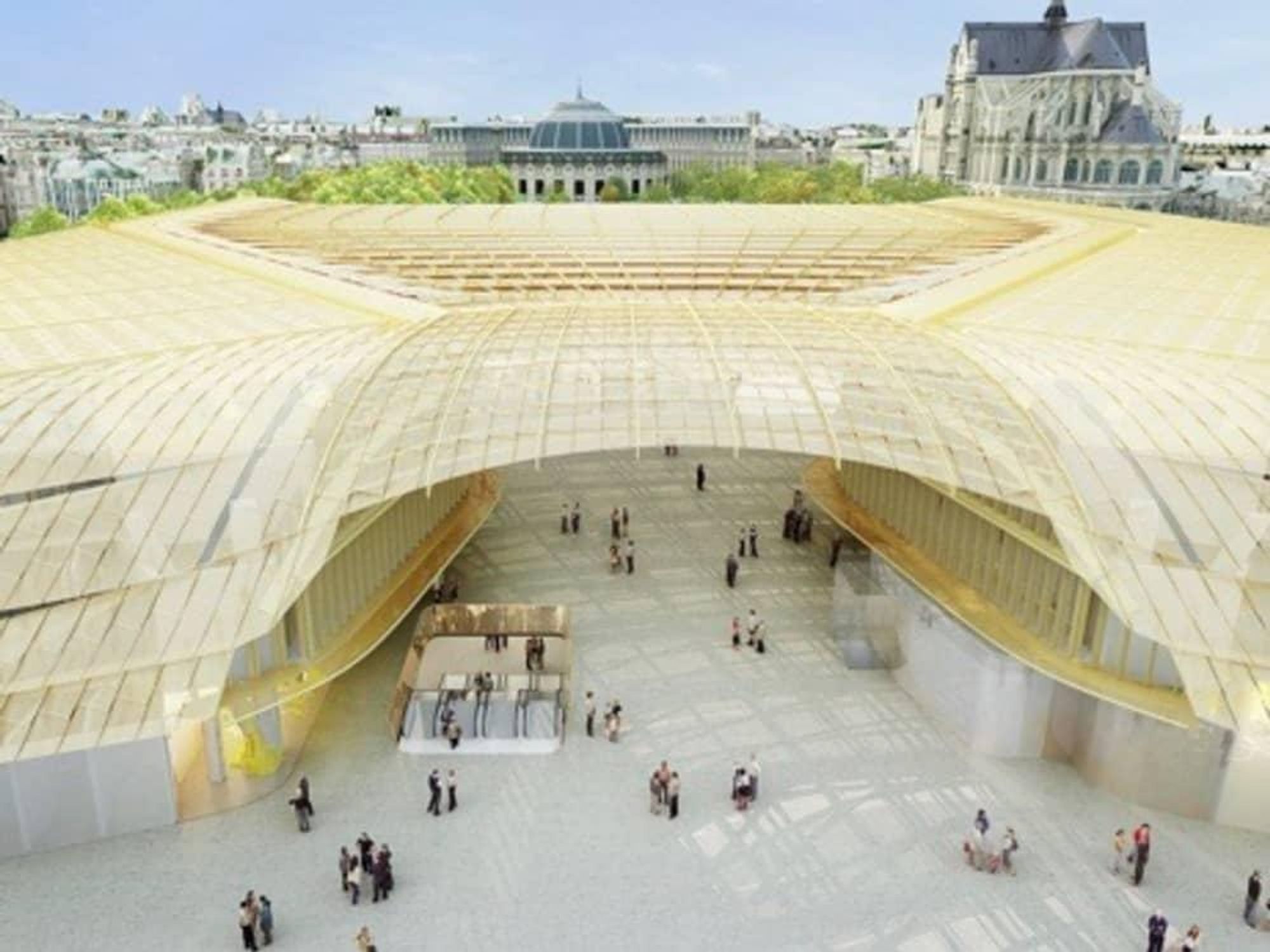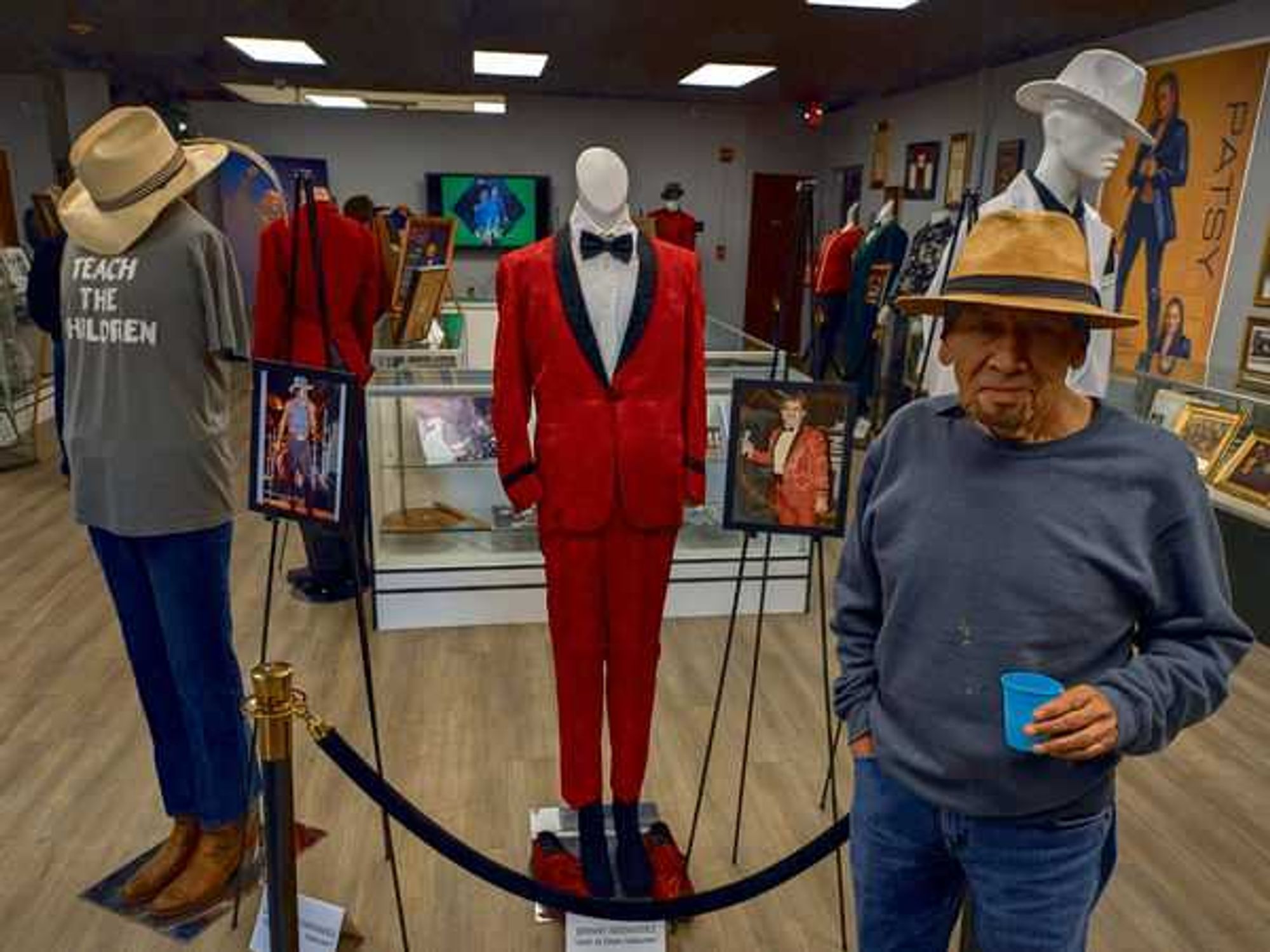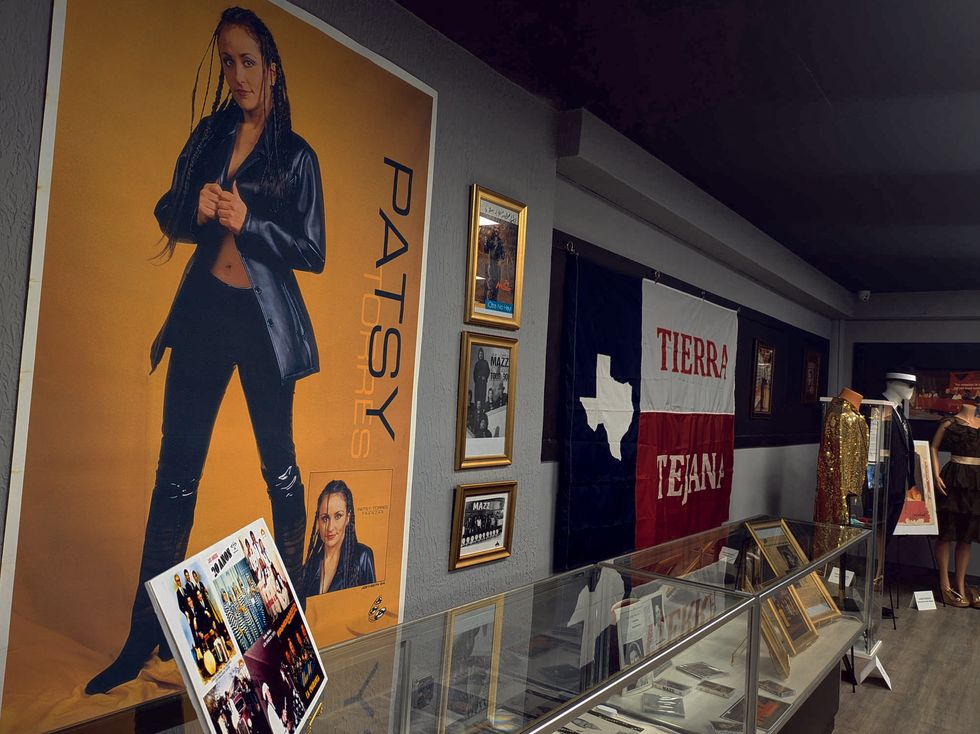Paris Canopy Controversy
Controversial new yellow ‘canopy’ over Paris landmark raises eyebrows, but some really like it

Houstonians, long accustomed to the sleek lines and expansive skylights of The Galleria, will likely have a unique appreciation of the controversial new glass canopy and revamped interior of the Forum des Halles mall in central Paris.
To my eyes, La Canopee – a giant, undulating, yellow steel umbrella holding thousands of glass panes — serves as a sunny, cheerful new marker for the mall below, which has undergone a billion-euro transformation of its formerly withdrawn personality.
Notwithstanding all the construction renovating the adjacent garden, the jaunty, honeycombed overhang projects an almost childishly playful ambiance as one approaches aboveground from neighboring St. Eustache cathedral, with its somberly contrasting 16th-century Gothic façade.
Additionally reassuring, in the wake of the terrorist attacks in Paris and Brussels, is the security check performed on visitors by black-clad gendarmerie, who have a significantly enhanced presence throughout the city these days.
But Parisians, like their admirably well-preserved, historic city, have a long memory, so it’s natural that they see the renovated mall in context on the timeline.
“Paris has never quite gotten over the destruction of Les Halles,” The New York Times recently noted, referring to the widely deplored 1971 demolition of the treasured 19th-century marketplace that originally inhabited the site, to be replaced by a “claustrophobic” underground mall and “flimsy” street-level pavilions.
My personal theory is that the real source of the Parisians’ aversion to the ‘70s mall was not so much that it was underground, or that it had become, as some say, a dilapidated eyesore, but that it was, well, boring. Functional, but nothing to write home about; quite a contrast to what was going on in retail in an upstart town on the other side of the world.
The Galleria opened its doors in Houston in late 1970, offering unusual attractions like an ice skating rink under a huge skylight along with big-name stores like Neiman-Marcus that promptly pulled in huge traffic. Expansions inevitably followed.
Now, imagine living in a magnificent old city like Paris, where everywhere you look, you see a historic relic with its own special personality like the original Les Halles, the Eiffel Tower and the Arc de Triomphe — and then the ancient Les Halles wrought-iron and glass framework is forsaken for a big, bourgeois shopping mall stuck deep into the heart of your beloved home.
It was convenient, to be sure, but what did it have to say for itself? After all, this is Paris. Bottom line: Was it artistically interesting?
It would seem so now. The enormous complex has been opened up and given an eye-catching, 75,000-square-foot golden swirl of a roof, with 18,000 glass panes to let the sunshine in; 35 glossy new stores (e.g., Lego, Sephora) and restaurants (including a brasserie by Michelin-starred chef Alain Ducasse); a diverse spectrum of cultural amenities ranging from a hip-hop center to an arts conservatory; and a whiff of fresh-paint appeal inside, where there’s more space above and below, so you feel you can breathe.
Let’s face it, though: Whatever anybody puts on, over or below this sacred site, it’s hard to compete with a legacy commemorated by the likes of the great 19th-century French writer Emile Zola. The literary architect of social change aptly described the bustling wholesale food market of his day in a novel as “the belly of Paris.”
Not only the people of France, but those of other EU countries felt a sense of ownership in the outcome of the long-awaited renovation of the mall, tied as it is to a central Metro/RER transit hub. So it was natural that some would be disappointed, and others, a little jealous. The Guardian sneered that the new yellow bonnet sported by its closest tourism competitor was a “custard coloured flop,” while the Telegraph sniped that the umbrella roof leaked.
But the Daily Mail gave the newly sunlit structure an unabashed thumbs-up with the headline: “NOW it’s the City of Light!” and showed off the novel grill roof with plenty of pictures.
Press votes aside, the people of Paris are ready for some lighthearted diversion, judging by the crowds that voted with their feet on a recent spring afternoon, streaming under the costly 238 million-euro canopy and down into the mall.
Young families pushing strollers, men and women coming from work, couples holding hands, and groups of girls and boys from across the city came to see the much-talked-about new canopy and find out what was underneath the tent.
“The people are curious,” observed Alexandre, a young man selling magazines and newspapers in the area. He said “the older people” who remember the original Les Halles don’t like the canopy, while he favored the design, but not the color. What did he dislike about the yellow color?
“It’s old,” Alexandre replied.
Yellow, an “old” color? Coming from a resident of the high-fashion metropolis of Paris, this revelation opened up a whole new line of thought about the meaning and use of color in design. My perception of the color was: sunny, uplifting, charming, like the golden yellow shades that artist Pierre Bonnard (1867-1947) used to such advantage in his paintings. People still flock to see his work in museums, but admittedly, it was produced some time ago.
So was yellow really “old,” or “yesterday,” fashionably speaking? Further research was needed to obtain information from local sources who were similarly au courante.
Two other young Parisians, Alice and Oliver, thought Alexandre’s interpretation of the color as “old” was spot-on. Asked to elaborate, Alice explained, “It’s not cool, or modern.” Both Alice and Oliver said they liked the canopy’s design, though.
Overall, the verdict from this sampling of savvy young Parisians seemed to be that architects Patrick Berger and Jacques Anziutti have a success on their hands – once they change the color to something cool from that old yellow, that is.
But I’m hoping they’ll wait a little while for the dust to settle before reaching for their paintbrushes. Moi, I like the yellow. What about vous?
----------------------
Contributor Leslie Loddeke periodically writes on travel, with a specialization on Paris.

 The newly opened Totally Tejano Hall of Fame and Museum includes a growing collection of memorabilia. Photo by Edmond Ortiz
The newly opened Totally Tejano Hall of Fame and Museum includes a growing collection of memorabilia. Photo by Edmond Ortiz